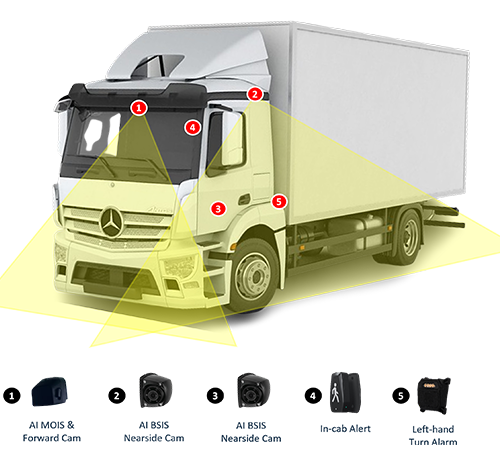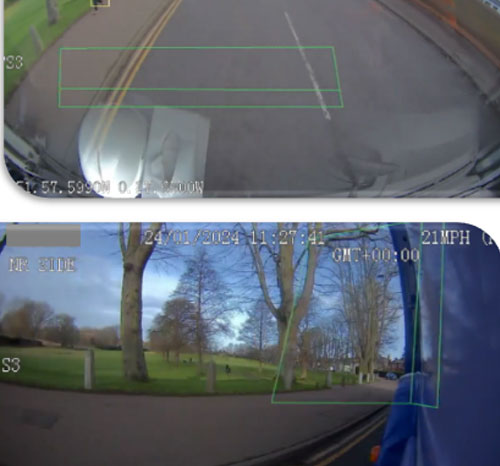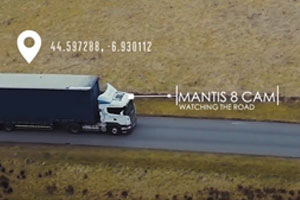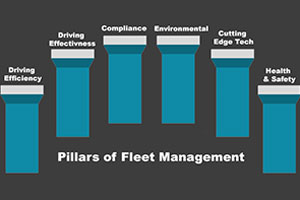Driver Vision Standard (DVS) & Progressive Safe System (PSS)
Direct Vision Standard
Are you aware of the upcoming Direct Vision Standard (DVS) legislation coming into place? If your fleet operates in London at all, it’s crucial to stay informed and ensure compliance.
Under this phase, specifications for the Progressive Safe System (PSS) have been unveiled for vehicles weighing over 12 tonnes GVW with a direct vision rating below three stars. The specifications are a requirement for entry into London.
While there still appears to be some confusion around what that means, we’ve highlighted the most important information below:
What is Direct Vision Standard (DVS)?
The DVS measures how much an HGV driver can see directly from their vehicle. This is expressed as a star rating from zero (limited) to five (good) direct vision. It indicates the level of risk to vulnerable road users, such as people walking and cycling.
What is the Progressive Safe System (PSS)?
The Progressive Safe System (PSS) mandates enhanced safety measures for vehicles over 12 tonnes GVW with low direct vision ratings. This includes fitting Camera Monitoring Systems (CMS) to eliminate blind spots and potentially replace mirrors. Additional requirements involve Blind Spot Information Systems, Moving Off Information Systems, side under-run protection, audible warnings during turns, and external warning signage.
These measures aim to improve visibility, detect vulnerable road users, and mitigate collision risks, contributing to safer operations in urban environments like London.
Who does it apply to?
The current legislation refers to all heavy goods vehicles (HGVs) over 12 tonnes travelling through London at any point.
If your vehicle doesn’t travel through London or isn’t classified as an HGV, you’re exempt for now. However, we anticipate this requirement might extend nationwide, making it crucial to stay informed and future-proof your business.
What area does it apply to?
The Direct Vision Standard enforcement zone covers all of Greater London outlined in the map below.

What do I need for DVS?
To be eligible, your HGV vehicle will need the following:
– CMS – Camera Monitoring System to eliminate any remaining blind spots.
– BSIS – Blind Spot Information system.
– MOIS – Moving Off Information System.
– Audio warnings.
– Fault Alerts to drivers.
Once compliant, Heavy Goods Vehicles (HGVs) rated zero, one, or two stars under the Direct Vision Standard (DVS) Progressive Safe System will be required to reapply for a 10-year permit.
The permits of vehicles 3, 4 or 5 stars will expire at the end of 25th October 2030 or ten years after the application date if granted later than 26th October 2020 (whichever is the later).
What is CMS software?
This refers to Camera Monitoring Systems (CMS) installed on vehicles. They are designed to eradicate any remaining blind spots. This functionality offers a visual alert of approaching vulnerable road users and helps prevent collisions within the blind spot zone.
What is the Blind Spot Information System (BSIS)?
The Blind Spot Information Systems (BSIS) use sensors to guarantee complete (9m x 2m) coverage along the nearside of rigid vehicles. Thus detecting vulnerable road users.
This aims to prevent left-turn collisions. For articulated trailers, sensors must be fitted to the front tractor unit but are recommended for the trailer where possible.


What is the Movement Off Information System (MOIS)?
Moving Off Information Systems (MOIS) are sensors that are required to be installed at the front of a vehicle. They are aimed at averting collisions within the front blind spot zone when the vehicle initiates movement from a stationary position.
Faults & Audio Warnings
Systems are required to alarm or warn you in case of limited functionality, malfunction, inaccurate information, or partial or complete system failure. The system should indicate a permanent error until resolved.
Audio warnings must be fitted to all vehicles, including those with left-hand drive to ensure all vehicles have the ability to warn of an intended manoeuvre.
What is the Penalty for non compliance?
You can be fined up to £550 a day per vehicle for non-compliance. You can reduce the penalty if paid within 14 days
The scheme will be implemented by a decriminalised Traffic Regulation Order, meaning a Penalty Charge Notice (PCN) can be issued. Automatic Number Plate Recognition (ANPR) cameras will detect a vehicle which will be checked with TfL’s permit database.
Why Choose MANTIS Live?

MANTIS Live offers an ideal solution for DVS, as it collaborates with Europe’s leading Telematics provider, Webfleet. The system will fully integrate your vehicle telematics with vehicle CCTV. Webfleet’s system integrates camera, live viewing, and evidence centre (along with all your other pertinent data) in one place.
The MANTIS Live DVS Kit provides:
- Compliance with 2024 regulations
- Recording AI near side & front cameras
- Video loss reporting
- Competitive price
Are you set up with the correct MANTIS Live kit?
You will need to be set up with the latest kit to ensure your models are up to date with the latest PPS and DVS compliant gear. If you aren’t sure, make sure to chat to our team and we can inform you if there is anything missing.
Contact us

Our team has any information you need on DVS and PPS regulations and if it applies to your business. Fill in the contact for to arrange a call back to discuss your business requirements




